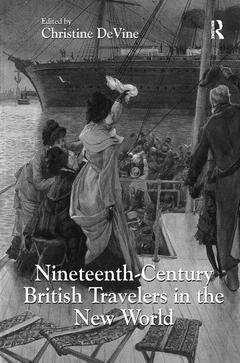Nineteenth-Century British Travelers in the New World
Coordonnateur : DeVine Christine

Date de parution : 01-2013
15.6x23.4 cm
Date de parution : 10-2016
15.6x23.4 cm
Thèmes de Nineteenth-Century British Travelers in the New World :
Mots-clés :
basil; hall; dismal; swamp; womens; writing; harriet; martineau; american; notes; Young Men; Donner Party; Nineteenth Century British Travelers; Bird’s Eyes; Basil Hall’s Travels; Butler Island; Dismal Swamp; Sing Sing Penitentiary; Charles Bird King; Cobbett’s Weekly Political Register; Women’s Travel Writing; Lady’s Life; Kemble’s Journal; Slave Auction; Royal Academy; Illustrated London News; English Woman’s Journal; Cultural Role Playing; Martineau’s Society; Martyr Age; Silverado Squatters; Martineau’s Life; Book Men; Prairie Wolf; Trollope’s Book



